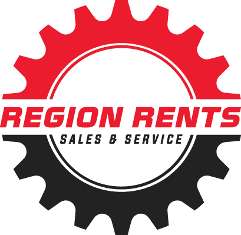September 25, 2025
In today’s competitive market, businesses are always looking for ways to optimize resources and maximize their return on investment. One effective strategy that is often overlooked is leveraging used equipment sales to generate additional revenue. By selling surplus or outdated machinery, companies can free up capital while ensuring that valuable assets continue to serve a purpose elsewhere. This article explores the methods and benefits of maximizing value through used equipment sales, offering actionable insights for businesses of all sizes.
Researching the Used Equipment Market
The used equipment market represents a vast and dynamic landscape that offers tremendous opportunities for businesses to maximize returns. Understanding this market begins with comprehensive research, allowing sellers to identify potential buyers and evaluate competition accurately. Market research provides crucial insights into pricing, demand and consumer preferences, forming the foundation for a successful sales strategy.
Conducting market research involves analyzing historical sales data and current trends to predict future demand. Businesses should also assess economic indicators that influence consumer purchasing behaviors, such as interest rates and economic growth. Additionally, technological advancements and industry developments can impact equipment values and buyer expectations. Staying updated with these factors helps in developing a proactive approach to selling used equipment.
Identifying Key Market Trends
Keeping pace with changing market trends is crucial for leveraging the value of used equipment sales. The evolution of technology and industry practices dictates shifts in buyer preferences, affecting equipment desirability. Recognizing these trends enables sellers to position their products effectively, catering to the current needs of the market. For example, increased emphasis on sustainability and eco-friendly practices has heightened demand for energy-efficient used equipment.
Utilizing data analytics to track evolving trends can provide valuable insights for businesses eager to capitalize on the used equipment market. Monitoring customer feedback, industry publications, and social media platforms can reveal shifts in buyer interest and preferences. Additionally, collaborating with industry experts and participating in trade associations can offer first-hand insights into emerging market trends. By interpreting and acting on these trends, companies can enhance their competitive advantage and optimize sales outcomes.
Businesses that adapt to market trends hold a distinctive advantage in capturing a larger share of the used equipment market. Trend analysis empowers sellers to anticipate changing buyer requirements and adjust strategies accordingly, ensuring alignment with the market. For instance, the integration of digital technologies in sales processes has transformed purchase dynamics, with online platforms gaining prominence. Embracing such trends enhances a company’s ability to reach broader audiences and meet consumer expectations efficiently.
Understanding Buyer Demographics
Understanding the demographics of potential buyers is a cornerstone in tailoring sales strategies for used equipment. Demographic factors, including industry sector, geographic location, and buyer purchasing power, significantly influence consumer behavior. Identifying these variables aids sellers in customizing marketing messages to resonate with specific buyer groups. Moreover, awareness of buyer demographics supports targeted advertising, increasing the efficacy of sales efforts.
Segmenting buyers into clear demographic categories allows businesses to focus their marketing efforts more effectively and achieve better results. For example, construction companies searching for heavy machinery will require different messaging than tech startups looking for IT assets, especially when it comes to used equipment sales. Recognizing these distinctions enables sellers to tailor their strategies, ensuring that marketing resonates with each unique audience and fosters stronger engagement. Furthermore, demographic analysis helps identify the most effective sales channels, making buyer interactions smoother and more successful.
According to World Metrics, the global equipment rental market size is projected to reach $230 billion by 2027, highlighting the growing demand for flexible equipment solutions. This trend underscores the importance of understanding consumer motivations and preferences when shaping strategies for used equipment sales. Recognizing that flexibility remains a key value driver allows businesses to design offerings that align with buyer expectations. Companies that provide return policies or adaptable terms are more likely to attract new customers and build lasting relationships.
Preparing Equipment for Sale
Thorough quality assessments are paramount in readying equipment for successful sale transactions. Quality assessments involve evaluating the functional and aesthetic conditions of equipment, identifying areas for enhancement. Rigorous inspections ensure that equipment conforms to industry standards, addressing any operational deficiencies or safety concerns. Conducting comprehensive quality checks instills buyer confidence, reinforcing perceived equipment value.
Implementing a systematic quality assessment process emphasizes consistency and accuracy in evaluating equipment. Step-by-step inspection protocols, backed by standardized checklists, support detailed assessments of each equipment component. Using diagnostic tools and professional expertise provides precise insights into equipment operational status. Moreover, compiling detailed assessment reports offers transparency and accountability, building buyer trust.
Quality assessments also play a crucial role in proactive issue resolution, minimizing post-sale disputes and enhancing customer satisfaction. Identifying potential problems before they escalate ensures smooth transactions and positive buyer experiences. Additionally, documenting assessment findings substantiates equipment condition claims, simplifying negotiation processes. By aligning equipment presentation with actual performance insights, businesses can drive buyer interest and optimize used equipment sales outcomes.
Refurbishing and Repairing Equipment
Refurbishment and repairs serve as pivotal components in maximizing used equipment sales potential. Implementing refurbishment practices involves upgrading equipment functionality, aesthetics, and performance, restoring equipment to optimal condition. Through targeted repairs and improvements, businesses address wear and tear issues, boosting equipment reliability and attractiveness. Effective refurbishment not only increases equipment value but also broadens buyer demographics by catering to diverse consumer needs.
Structuring refurbishment processes around cost-benefit analysis ensures efficient resource allocation and return on investment. Focusing on high-impact upgrades that align with market demand contributes to heightened equipment desirability. Simultaneously, understanding buyer preferences guides refurbishment choices, fostering equipment appeal. Businesses that integrate advanced technologies, ergonomic adjustments, and energy-efficient upgrades elevate equipment profiles and attract modern buyers.
Profound refurbishment efforts require collaboration with skilled technicians and industry experts, ensuring excellence and precision in restoration efforts. By outsourcing specialized tasks to professionals, businesses guarantee superior craftsmanship and technical reliability. Furthermore, documenting refurbishment processes and rectifications guarantees transparency and enhances buyer assurance. A commitment to high-quality refurbishment underscores seller dedication to customer satisfaction, nurturing long-term business relationships.
Organizing Documentation for Buyers
Comprehensive documentation, including manuals and maintenance records, forms an integral aspect of successful used equipment sales. Access to detailed documentation reflects equipment care and long-term reliability, reinforcing buyer confidence. Equipment manuals provide operational guidelines, assisting buyers in understanding equipment functionalities and features. Similarly, maintenance records validate equipment history, showcasing adherence to service schedules and addressing potential issues.
Updating and organizing documentation for prospective buyers is crucial in facilitating seamless sales transactions. Digitizing manuals, service records, and warranty details ensures accessibility and accessibility, streamlining communication processes. Furthermore, offering detailed documentation in multiple languages caters to international buyers, extending market reach. Transparent presentation of equipment history inspires buyer trust and informs purchasing decisions, reducing perceived risks.
Well-documented equipment can facilitate accurate condition evaluation, simplifying negotiation and mitigating buyer skepticism. Comprehensive documentation enables sellers to communicate equipment attributes effectively, aligning expectations and terms. Moreover, thorough documentation enhances after-sales support, addressing potential inquiries or challenges promptly. Businesses that prioritize documentation align offerings with buyer needs, creating positive experiences that encourage repeat business.
Businesses that take a strategic approach to used equipment sales can unlock significant value while optimizing resources. From market research and refurbishment to proper documentation, each step plays a vital role in building buyer trust and maximizing returns. By embracing these best practices, companies position themselves for long-term success. If you need professional-grade equipment for your next project, contact Region Rents Sales & Service.







